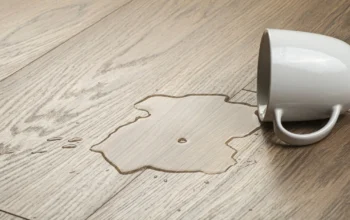Wooden stair moulding plays a significant role in the aesthetics and structure of a staircase. It frames the stairs, conceals gaps, protects edges, and enhances architectural appeal. However, like any other wood component in your home, stair moulding requires consistent care to retain its beauty and extend its lifespan.
Dust, scuffs, shoe marks, moisture, and regular foot traffic can wear down even the toughest moulding over time. In this comprehensive guide, we’ll cover everything you need to know about cleaning, maintaining, and protecting your wooden stair moulding so it looks great and performs well for years to come.
Why Proper Care of Wooden Stair Moulding Matters
Before diving into the methods, it’s important to understand why maintaining stair moulding is crucial:
-
Prevents permanent damage: Built-up dirt and grit can scratch or dull the finish.
-
Preserves aesthetics: Clean and polished moulding elevates your interior’s overall appearance.
-
Extends lifespan: Routine care helps prevent rot, warping, and moisture damage.
-
Protects your investment: Quality stair moulding isn’t cheap—protect it to avoid costly replacements.
Step-by-Step Guide to Cleaning Wooden Stair Moulding
1. Dusting – Your First Line of Defense
Frequency: Weekly or biweekly
Use a microfiber cloth, feather duster, or soft-bristled brush to gently remove dust and surface debris. Dust buildup can act like sandpaper, wearing down the finish over time.
Tips:
-
Always dust along the grain of the wood.
-
Use a vacuum with a soft brush attachment to clean crevices and intricate moulding profiles.
-
Avoid compressed air, as it can push dust into wood pores.
2. Light Cleaning – For Everyday Grime
Frequency: Every 2–4 weeks or as needed
Once dusted, your moulding may still have light smudges, fingerprints, or shoe scuffs—especially in high-traffic areas. Use a damp (not wet) microfiber cloth and a mild wood-safe cleaner.
DIY Cleaning Solution:
-
1 part white vinegar
-
3 parts warm water
-
A few drops of dish soap
Apply the solution to a cloth (never directly on the wood), gently wipe the surface, then follow with a dry towel.
Avoid:
-
Abrasive scrubbers
-
Soaking the wood
-
Harsh chemicals or bleach
3. Deep Cleaning – When Basic Wipes Aren’t Enough
Frequency: Every 3–6 months or for stubborn grime
If your moulding has deep-set dirt or sticky buildup, a deeper clean may be necessary.
Method:
-
Use mineral spirits or a wood cleaner like Murphy Oil Soap diluted in warm water.
-
Dip a soft cloth into the solution, wring it out well, and gently scrub the area.
-
Rinse with a clean damp cloth and dry immediately.
Pro Tip: Test any new cleaner on a hidden area first to avoid discoloration or finish damage.
How to Maintain and Protect Wooden Stair Moulding
Cleaning is only half the equation—maintenance is what keeps your moulding in top shape long term. Here’s how to do it right.
1. Polishing and Conditioning the Wood
Frequency: Every 4–6 months
Use a high-quality wood polish or conditioner to nourish the wood and enhance its natural finish. This helps prevent drying, cracking, and dullness.
Recommended Products:
-
Beeswax wood polish
-
Lemon oil or orange oil-based wood conditioners
-
Commercial wood polish sprays (wood-safe only)
How to Apply:
-
Apply polish using a soft cloth in a circular motion.
-
Buff gently with a dry microfiber towel for a natural shine.
Avoid silicone-based polishes if your moulding is sealed with a polyurethane finish, as it may leave a residue.
2. Inspect for Damage
Frequency: Monthly
Visually inspect your stair moulding for:
-
Chips, cracks, or splinters
-
Signs of warping or loosening
-
Gaps at joints
-
Water damage or mold
Catch issues early to prevent them from spreading or becoming more expensive to fix.
DIY Fixes:
-
Use wood filler or touch-up markers for small nicks and scratches.
-
Re-nail or glue loose moulding sections.
-
Use clear caulk or wood putty to seal small gaps.
3. Re-Sealing or Re-Finishing
Frequency: Every 3–5 years (or as needed)
Over time, finishes wear down. If your moulding looks dull, worn, or starts absorbing moisture, it may need to be re-sealed or refinished.
Steps:
-
Lightly sand the surface with fine-grit sandpaper (220 grit).
-
Clean off all dust.
-
Apply a new coat of finish—either a wood stain and sealant or a polyurethane clear coat.
-
Let it dry completely before use.
Pro Tip: Choose a satin or matte finish for a more subtle, modern look, or a glossy finish for a traditional touch.
Common Problems and How to Prevent Them
Even with proper cleaning, wood moulding can run into issues. Here’s what to watch for—and how to stop problems before they start.
Problem 1: Water Damage
Causes:
-
Wet mopping stairs
-
High humidity
-
Plumbing leaks nearby
Solutions:
-
Never use excess water during cleaning.
-
Use a dehumidifier in damp basements or areas.
-
Seal your moulding to repel moisture.
Problem 2: Scratches and Scuff Marks
Causes:
-
Shoes brushing against stair edges
-
Vacuum bumping against trim
-
Pet claws
Solutions:
-
Use furniture touch-up markers for minor scratches.
-
Apply felt pads or rubber bumpers on cleaning tools.
-
Teach pets to avoid stair edges if possible.
Problem 3: Moulding Pulling Away from the Wall
Causes:
-
Humidity changes
-
Settling of the home
-
Poor installation
Solutions:
-
Re-secure with finishing nails and wood glue.
-
Fill any resulting gaps with caulk or wood filler.
-
Consider using flexible trim adhesive during future installs.
Problem 4: Fading or Yellowing
Causes:
-
UV exposure from windows
-
Low-quality finishes
Solutions:
-
Use window treatments or UV-protective film.
-
Apply finishes that include UV inhibitors.
-
Refinish with a non-yellowing polyurethane.
Seasonal Maintenance Tips
-
Spring/Summer: Use a dehumidifier to control moisture; polish moulding.
-
Fall: Inspect for cracks and gaps as wood contracts in cooler air.
-
Winter: Be mindful of salt and snow carried in from shoes; clean promptly to prevent staining.
Cleaning Products Checklist
Here’s what you’ll want to keep on hand for cleaning and maintenance:
✅ Microfiber cloths
✅ Soft-bristle brush or feather duster
✅ Mild dish soap
✅ White vinegar
✅ Mineral spirits or wood cleaner
✅ Wood polish or conditioner
✅ Touch-up markers or wood filler
✅ Fine-grit sandpaper
✅ Clear polyurethane or wood finish
Eco-Friendly Cleaning Alternatives
If you prefer green cleaning options, you can use:
-
Olive oil and lemon juice (natural polish)
-
Baking soda paste for sticky stains
-
Castile soap and water for gentle cleansing
Just be sure to test homemade solutions before full application.
Final Thoughts
Wooden stair moulding is a beautiful and functional element that deserves thoughtful care. With a combination of regular dusting, proper cleaning techniques, and occasional polishing or refinishing, you can ensure your moulding remains a stunning highlight in your home for decades.
By incorporating these simple routines into your household care plan, you’ll avoid premature damage, preserve the natural beauty of the wood, and protect your investment.
Need Professional Advice?
At Vellfinish Floors, we not only provide high-quality stair moulding but also offer expert advice on cleaning, maintenance, and restoration. If you’re unsure how to care for a specific wood type or want help choosing the best wood finish, reach out to our team today.






